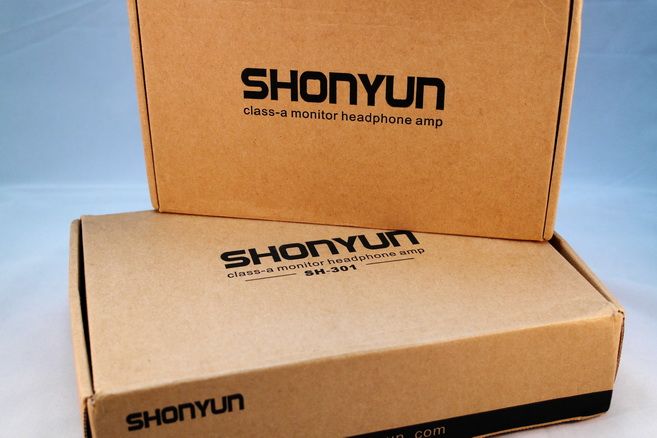
Spec

301 Pro
Frequency Response: 5-100 kHz
Output Power: 800mW
SNR: 110dB
Distortion: Less than 0.005%
Recommended Headphone Impedance: 16~600 ohm
Transient: 55v/µs
Power Supply: 220V AC IN / 28V DC OUT
Weight: 1.5KG
Size: (main unit) 110mm*100mm*48mm + (power supply) 100mm*100mm*45mm
MSRP: US$425
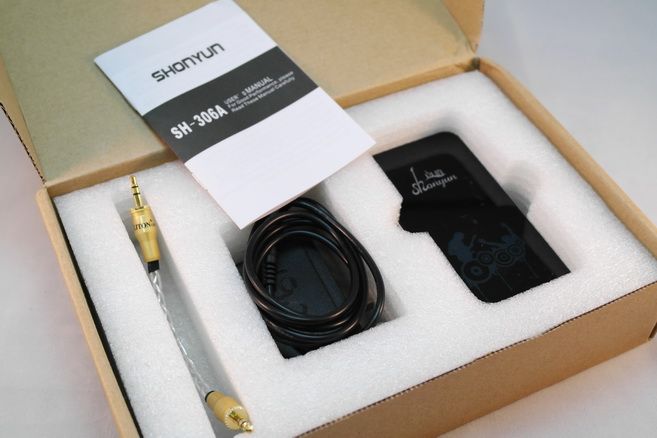
SH-306A
Frequency Response: 10-100 kHz
Output Power: 455mW @ 16 ohm
SNR: 105dB
Distortion: Less than 0.005%
Recommended Headphone Impedance: 16~300 ohm
Input Impedance: 28 kOhm
Output Current: 600mA max
Battery Life: Around 12 hours
Power Supply: 110~220V AC IN / 21V 500mA DC OUT
Size: 110mm*70mm*25mm
MSRP: US$160
Accessories and Build Quality
Both amps come with hard paper box. The 301 Pro doesn’t have any extra accessories but the 306A does come with a short, well-built DIY’ish 3.5mm interconnecting cable. Both have their own dedicated power supply as they do run on rather high voltage. Judging from the size and weight, the 301 Pro’s power supplier is probably good quality linear power supplier. Likely because of that reason, it only takes 220V AC input. So those of you who live in the 110V region might not be able to use this. On the other hand, the 306A power suppler / charger does take in both 110V and 220V AC, and pumps out a fairly high 21V DC. You will have to stick to this adapter for recharging.
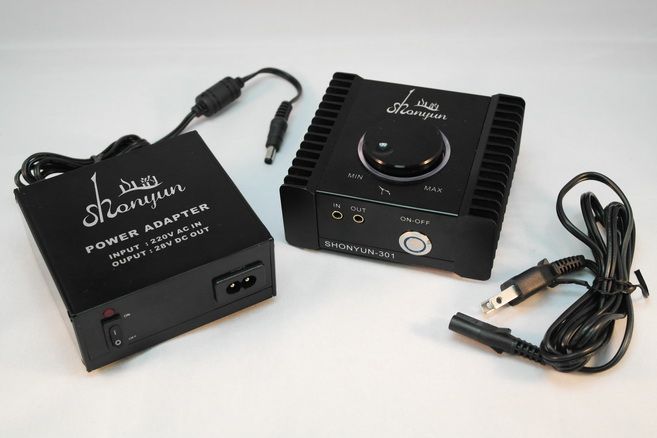
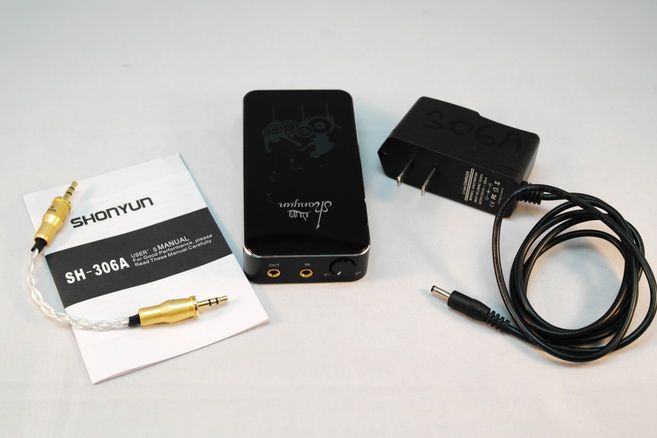
As far as build quality is concerned, both amps are solid, if not a bit over-the-top. Aesthetically however, they are on the ugly side. The 301 Pro and its power supply weight like a ton together, and not something you will want to drop on your feet. The sides of the main unit are heat sink, while the volume control is at the top. The main unit and power supply do get a little warm during operation, but nowhere near enough to burn. On/off switch as well as 3.5mm stereo input and output jack are both at the front. There is an extra RCA input on the back as well. The two 3.5mm jack s are a little too close together, so large 3.5mm plugs might not fit comfortably together side-by-side. Same can be said to the RCA jack placement, so don’t use too big of a RCA plug. The 306A isn’t anywhere small either. It is almost two iPhone back-to-back, probably because it runs an unusual 21V by stacking 5 pieces of 3.7V Li-ion batteries in serial. The frame of the body is metal but the top and bottom are acrylic and can be scratched. The volume control is retractable into the body, which is kind of cool and minimizing any chance of accidental volume chance. The only thing I didn’t like is the lack of a power switch. Instead, the unit turns itself on when a headphone is plugged in.
Though I personally prefer function over form, it does seem ShonYun can use some effort in design. It won’t hurt to have some degree of aesthetic beauty even though they don’t have to be eye candy by definition. The odd thing is, the previous models for both, the original 301 and 306 are better looking than 301 Pro and 306A.
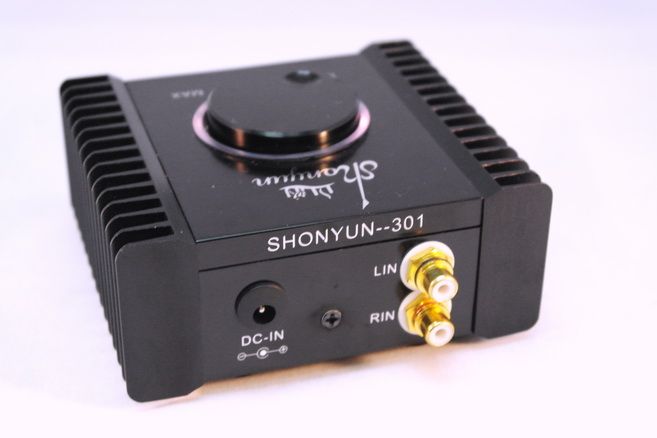
301 Pro's main unit
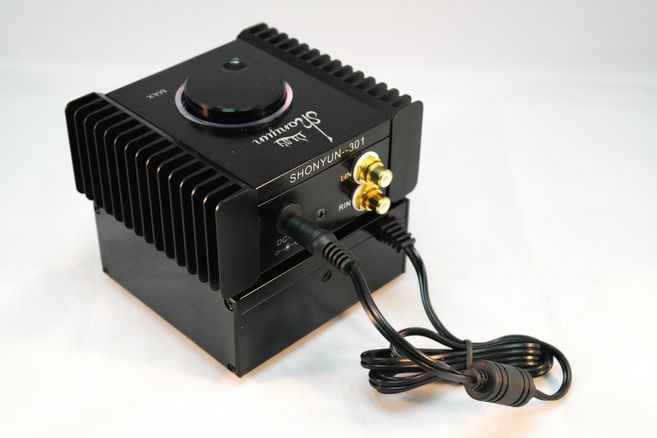
301 Pro with power supply
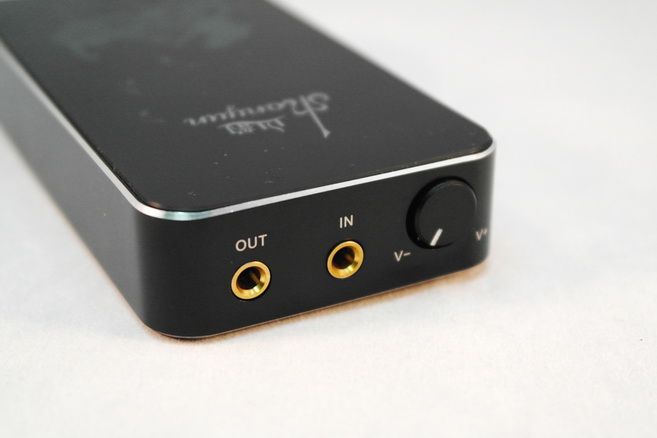
306A volume knob retracted
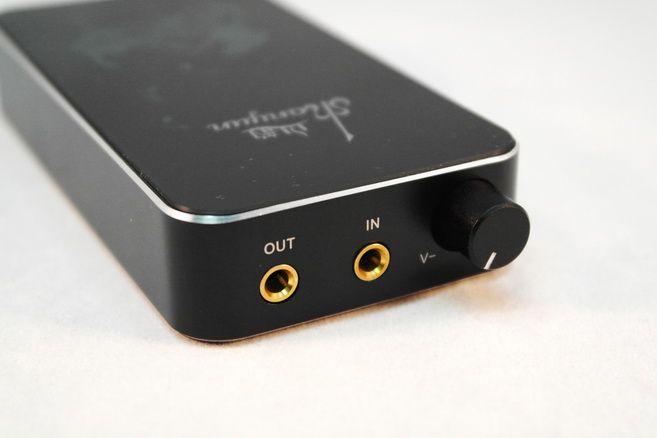
306A volume knob extended
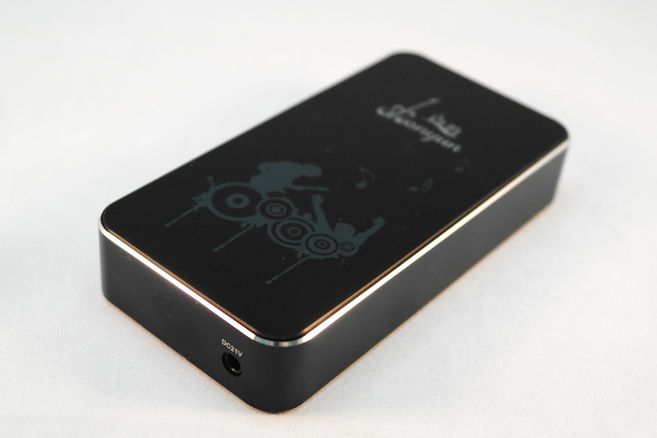
Gain, Hiss and EMI
Both amps have fixed gain. The 301 Pro is +15dB and the 306A is +12dB. These kinds of gains are generally fine with harder-to-drive big cans but not suitable for sensitive headphone and especially IEM. As evidence, hissing in Shure SE530 becomes noticeable on 301 Pro once the volume knob passes 12 o’clock and even worst on 306A, where it is always noticeable regardless of volume.
EMI is not tested on 301 Pro since it is a desktop amp. It is however quite noticeable on 306A – annoying but not the worst I have seen.
Sound Quality
Objectively, both amps measured quite well under RMAA with a 16 ohm dummy load. The 301 Pro is low noise and flat from 20Hz to 20kHz. The 306A is also low noise, but has a tiny roll-off, starting from 50Hz and down to -0.3dB @ 20Hz. The degree is so small it is pretty much inaudible so I won't worry about it. As far as power goes, 301 Pro is decent but nothing spectacular into low impedance load. It is more than enough but not quite the kind that is designed to pump out massive amount of current. It should still do fairly well with low impedance load but it is also obvious designed with higher impedance full size cans in mind. On the other hand, the 306A does output a rather massive amount of current indicating that it could have been quite a good choice for portable use – except that it has too high a gain that makes it hard to work with sensitive headphone since you can hardly turn the volume knob over 9 o’clock before it starts to get too loud. Last but not least, the output impedances are a decent 3 ohm for the 301 Pro and an extremely low 0.1 ohm for 306A.
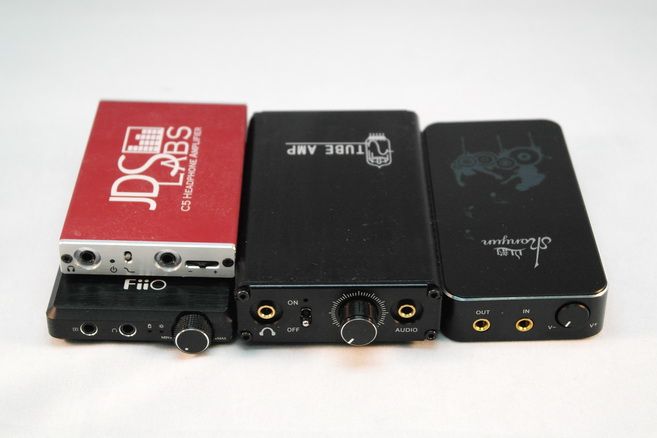
Size Comparison (from left): FiiO E12, JDS Labs C5, Tube Amp's TA-1, 306A
Subjectively, 306A is excellent sounding. It is clean, well resolved, and quite neutral in tone, easily comparable to the sound quality of JDS Labs C5 and O2 or Leckerton Audio UHA-4. Compared to O2, the overall image and soundstage is just a tap smaller, but still bigger than that of C5 and UHA-4. It is also slightly forwarded than O2, but not as much as C5 or UHA-4. Bass decay is a hair shorter than other three, making the bass body sounds a little less full, though not lacking per se. Like C5, 306A tends to draw out a bit more upper detail, making it slightly on the bright side. All and all, 306A is just tilting slightly to being analytical sounding but still fairly well balanced.
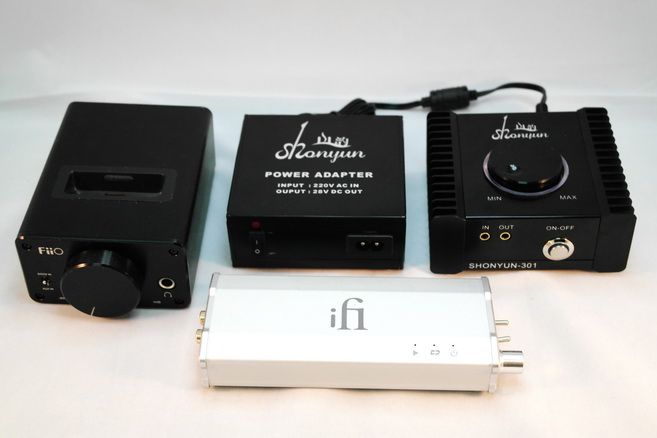
Size comparison (from left): FiiO E09K, iFi Audio iCAN, 301 Pro and its power supply.
Different from the original 301 that runs on a pair of OPA627 with discrete buffer stage, the newer 301 Pro is on a pair of OPA111 (also with discrete buffer stage). OPA111 isn’t designed as an audio chip but it has been well received as one in the past, and especially among the Chinese audiophiles community whom consider it a great sounding opamp. Well, it does sound really good in the 301 Pro. Compared to O2 and iFi Audio iCAN, the 301 Pro sounds a tap slower, but fuller in texture and body. It can almost be said as sounding mellow / less aggressive and more musical. Though it doesn’t lack micro-detail in any way, the mellowness in presentation tends to pull the detail a little to the back, giving it an overall impression of smoothness. Soundstage is a little narrow from side to side, but the depth is rather good. Overall, 301 Pro has a good blend of musicality and neutrality, with slow vocal sounding especially euphonic and surreal. However, the presentation can be a little slow for those who mostly listen to fast paced music.
Sum-up
With the right headphone, both 301 Pro and 306A can perform exceptionally well. Given the 301 Pro more romantic, tube-ish presentation, I would think it will go really well with fast pace, more aggressive headphone like Grado in complementing each other. While the 306A is more neutral in tone, it is not particularly suitable for highly sensitive IEM due to hiss, which of course is a bit disappointing given how many IEM users are out there. Frankly speaking, both amps have too much gain to be useful for many headphones that are designed with portable source in mind, but 301 Pro behaves better than 306A in that regard. ShonYun has gotten both amps almost right in sound, but still a bit off on design and practicality. Once these issues are ironed out, they could very well be competing with the best in business.
A thanks to Su @ Earmass.com for the loaner units.





